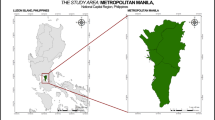Abstract
Thar desert spreads in western part of Rajasthan, northern part of Gujarat, and some parts of Punjab and Haryana. The terrain is dominated by slightly sloping plains, broken by some dunes and low barren hills. The area is characterized by low average annual rainfall which is erratic in distribution and intensity. Drought will remain a major hindrance for agricultural production in Thar desert. Due to water stress condition, many watershed based development activities has been adopted by government and non-government organizations for the growth and sustainable development of this region. The need of this hour is preparation of a national level watershed atlas of 1:50,000 scale because majority of thematic maps are being produced presently on same or 1:10,000 scale. The manual delineation of watershed boundary in flat terrain based on topographic map will be time consuming and less accurate in the absence of prominent contour lines. Automated approach for watershed delineation using Digital Elevation Model (DEM) along a suitable algorithm has the advantage because the output is not only less time consuming but also independent from human decisions. Hence, a case study has been carried out in Churu sub-basin part of Indus basin which is located in Thar desert region. Depression less DEM with different spatial resolutions was used as input in hydrology tool of ArcGIS spatial analyst function for characterization of watersheds. The Churu sub-basin has been divided into various numbers of watersheds with an average size of 600 km2. These watershed boundaries have been validated with respect to high resolution satellite imageries (IRS P6 LISS IV), Survey of India toposheets, ancillary data and limited field checks.










Similar content being viewed by others
References
Ahmed, S. A., Chandrashekarappa, K. N., Raj, S., Nischitha, V., & Kavitha, G. (2010). Evaluation of morphometric parameters derived from ASTER and SRTM DEM-A study on Bandihole Sub-watershed Basin in Karnataka. Journal of Indian Society of Remote Sensing, 38, 227–238.
Anornul, G. K., Kabobah, A., & Kortatsi, B. K. (2012). Comparability studies of high and low resolution digital elevation models for watershed delineation in the tropics: case of Densu River Basin of Ghana. International Journal of Cooperative Studies, 1, 9–14.
ASTER GDEM Validation Team (2009) ASTER Global DEM Validation-Summary Report. https://lpdaac.usgs.gov/lpdaac/products/aster_products_table/routine/global_digital_elevation_model/v1/astgtm-04-09-2010.
Baliwal, P. C., & Wadhawan, S. K. (2002). Geological evolution of Thar desert in India- issues and prospects. Proc Indian Natn Sci Acad, 69(2), 151–165.
Cartodem Project (2008) Augmented stereo strip triangulation (ASST) software analysis & architecture document - SAC/RESIPA/SIPG/CARTODEM/TN-01/February2008.
GLCF, Shuttle radar topography mission (SRTM), technical guide, University of Maryland, U.S.A. (2005).
Horton, R. E. (1945). Erosional development of streams and their drainage basins, hydrophysical approach to quantitative morphology. Bul Geo Soc Amer, 56, 275–370.
Huggel, C., Schneider, D., Julio Miranda, P., Delgado Granados, H., & Kaab, A. (2008). Evaluation of ASTER and SRTM DEM data for lahar modeling: a case study on lahars from Popocatppetl Volcano, Mexico. Journal of Volcanology and Geothermal Research, 170, 99–110.
Hutchinson, M. F., & Gallant, J. C. (2000). Digital elevation models and representation of terrain shape, terrain analysis: principles and applications (pp. 29–50). NY: Wiley.
India-WRIS. (2012). River Basin Atlas of India, RRSC-West, NRSC, ISRO, Jodhpur, India.
Lin, Z., & Oghuchi, T. (2003). Drainage density and slope angle in Japanese bare lands from high-resolution DEMs. CSIS Discussion Paper, 56(7), 3–1.
Murlikrishna, S., Narender, B., Shashivardhan, R., & Abhijit, P. (2011). Evaluation of Indian National DEM from CARTOSAT-1 data, 1, NRSC-AS4DM-DP4VASD, 286. Hyderabad: ISRO.
Osman, Y. (2004). An investigation of the effect of drainage density on hydrologic response. Turkish J Eng Env Sci, 28, 85–94.
Al-Muqdali, S. W., & Markel, B. J. (2011). Automated watershed evaluation of flat terrain. Journal of Water Resources and Protection, 3, 892–903.
Strahler, A. N. (1957). Quantitative analysis of watershed geomorphology. Transaction American Geophysical Union, 38, 913–920.
Strahler AN (1964) Quantitative geomorphology of drainage basins and channel networks. In: Chow VT (Ed.), Handbook of Applied Hydrology (pp. 439–476). McGraw-Hill New York.
Hosseinzadeh, S. R. (2011). Drainage network analysis, comparison of digital elevation model (DEM) from ASTER with high resolution satellite image and aerial photographs. International Journal of Environmental Science and Development, 2(3), 25–42.
Jones, R. (2002). Algorithms for using a DEM for mapping catchment areas of stream sediment samples. Computers & Geosciences, 28, 1051–1060.
US. Department of Agriculture (Natural Resource Conservation Service) (2009). “Federal guidelines, requirements and procedures for the national watershed boundary dataset” techniques and methods 11 – A3. U.S. Geological Survey and U.S. Department of Agriculture (NRCS), Reston, Virginia: 2009.
Zhang, X. (1999). Comparison of slope estimate from low resolution DEMs: scaling issue and a fractal method for their solution. Earth Surface Process and Landforms, 24, 773–779.
Acknowledgements
We are very indebted to India-WRIS project, Regional Remote Sensing Centre West, National Remote Sensing Centre, Jodhpur, India for giving the opportunity to carry out this research work. We are also thankful to scientific staffs of RRSC-West, who all have given every support time to time for completion of this study.
Author information
Authors and Affiliations
Corresponding author
About this article
Cite this article
Bera, A.K., Singh, V., Bankar, N. et al. Watershed Delineation in Flat Terrain of Thar Desert Region in North West India – A Semi Automated Approach Using DEM. J Indian Soc Remote Sens 42, 187–199 (2014). https://doi.org/10.1007/s12524-013-0308-x
Received:
Accepted:
Published:
Issue Date:
DOI: https://doi.org/10.1007/s12524-013-0308-x




